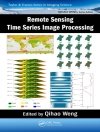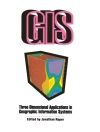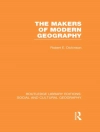A ‘science of cities and regions’ is critical for meeting future challenges. The world is urbanising: huge cities are being created and are continuing to grow rapidly. There are many planning and development issues arising in different manifestations in countries across the globe. These developments can, in principle, be simulated through mathematical computer models which provide tools for forecasting and testing future scenarios and plans. These models can represent the functioning of cities and regions, predicting the spatial demography and the economy, the main flows such as journey to work or to services, and the mechanisms of future evolution. In this book, the main principles involved in the design of this range of models are articulated, providing an account of the current state of the art as well as future research challenges.
Alan Wilson has over forty years working with urban and regional models and has contributed important discoveries. He has distilled this experience into what serves as both an introduction and a review of the research frontier. Topics covered include the Lowry model, the retail model, principles of account-based models and the methods rooted in Boltzmann-style statistical modelling and the Lotka-Volterra approach to system evolution. Applications range from urban and regional planning to wars and epidemics.
สารบัญ
1: Models and Systems: The Lowry Model as an Example.- 2: The Retail Model and its Applications.- 3: Wars, Epidemics, Ecology and the Evolution of Spatial Structure: Connecting Models through Generalisation.- 4: Theory.- 5: Methods: The Model-Building Tool Kit.- 6: Adding Dept-1: Spatial Interaction and the Location of Activities.- 7: Adding Depth-2: Structural Dynamics.- 8: Tools for Complexity Science.- 9 Research Challenges.












